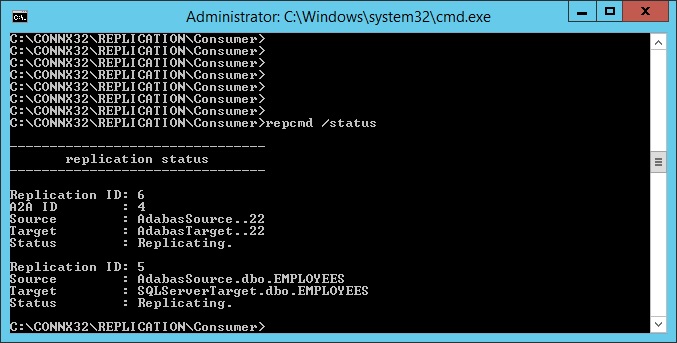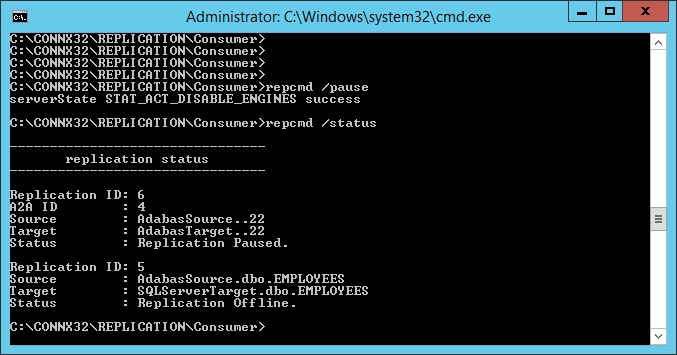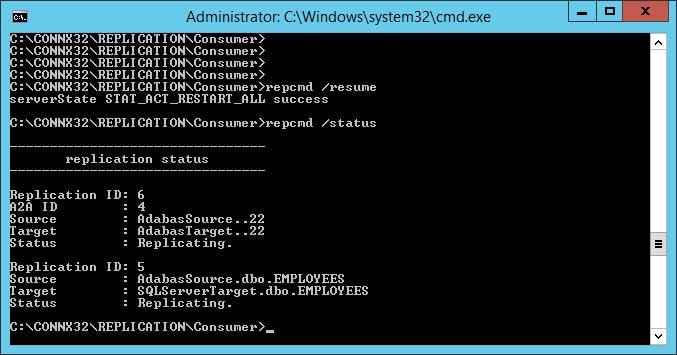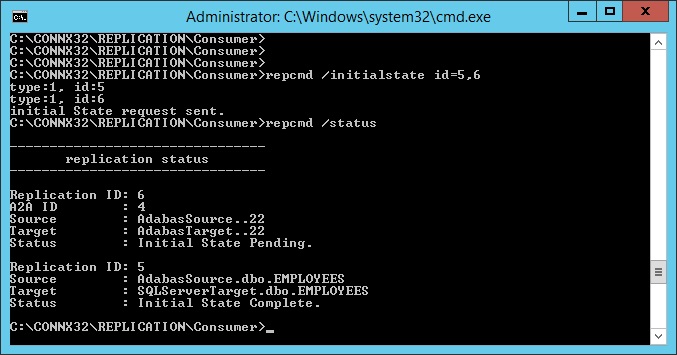The repcmd command line utility is a program that can be used to pause and resume the replications, get replication status and start intial states on replications. The repcmd utility is in the replication\consumer folder and must be run from machine where the replication controller is installed. The repcmd program is tied to the local replication controller it is installed with, to use the commands with a different controller, the repcmd program local to the other controller must be used.
To get the status of the replications deployed to the local controller: repcmd /status This will list all the replications deployed and their current state.

To pause replications use: repcmd /pause After executing, the success return means the message has been sent to the controller. After the command is sent, a status call can be used to see the state of the controller.

To resume replications use: repcmd /resume After executing, the success return means the message has been sent to the controller. After the command is sent, a status call can be used to see the state of the controller.

To start an initial state on one or many replications use: repcmd /initialstate id=replicationid,replicationid example to start an initial state on one replication use: repcmd /initialstate id=4 To start an initial state on three replications use: repcmd /initialstate id=4,5,6 After the initial state request has been sent, the status can be returned to see the progress of the initial states with repcmd /status

* Note: When using the windows powershell to run initial state requests from the repcmd it may be necessary to use quotes around the command statement. For example from the powershell run: cmd.exe /c "repcmd.exe /initialstate id=4,5,6" or cmd.exe /c 'repcmd.exe /initialstate id=4,5,6'
* Note: The command to start an initial state uses the Replication ID found in the CONNX Replication Administrator. If an Adabas to Adabas replication is added through the Adabas commands and not with the Replication Administrator, but it will not have a Replication ID to perform an initial state. Status can still be returned on the new Adabas to Adabas replication, but not starting intial states. To get a replication ID for the new Adabas to Adabas replication, open the Replication Administrator, go to the Server Status tab to sync up the Replications. Then perform a deploy to send the new Replication ID to the controller. Then a repcmd /status command will show the Replication ID for the Adabas to Adabas replication and the initial state command can be used.